Curling around a lonely, dusky, shoulderless road in the shadows of towering redwoods is humbling enough, but when you take away any hint of engine noise, it becomes downright surreal. The dead quiet of the forest and the damp coolness in the permanent shade made it seem like we were skating through these Santa Cruz mountains. It was slick, shadowy corners, and blind radius after blind radius as I chased Brian Wismann, VP of Product Development at Zero Motorcycles, through the hills, but he always seemed to be at least three turns ahead.
I was here to ride the company’s just released (but by this point, heavily leaked) 2020 SR/S model, the first fully faired motorcycle from Zero. We’d be putting it through its paces on the street to get a feel for its new ergos and bodywork, and the undulating route just a few minutes from Zero’s Scotts Valley HQ was turning out to be an ideal way to showcase its latest electric. The bike was squirting between the turns, weaving easily from apex to apex, and in this silent, almost hallowed environment, it felt kind of eerie.
“Think of it as electric zen,” Zero’s Chief Technology Officer Abe Askenazi had told us at the model presentation earlier. “We wanted to convey the feeling of flying, of serenity with this bike.” I chuckled out loud when I heard it at the time, but after riding through a redwood forest on that stealthy electric? Hell, I was ready to pen a damn Hallmark card. More surprising was how few changes there are under the bodywork compared to the SR/F released last year; Zero says that mechanically, the two bikes are nearly identical, but on my ride, it just didn’t look or feel that way. At all.
For that, you can probably credit the Zero team’s work ethic and pursuit of the long game. The company has been in the electric space for 14 years now and lately has been working overtime to cast off past admonitions of “boxy mountain bikes” and “two-wheel appliances.” The deep team of veteran engineers and designers includes guys like Askenazi, who did a long stretch of time in the Buell universe, and Wismann, a veteran of Brammo’s electric motorcycle division.
Zero likes to call its latest new motorcycle an “industry-redefining product,” so we were here to find out if the SR/S was really more than just an SR/F with revised ergonomics and some additional bodywork. The signature feature of this model is the fairing, which Zero emphasized multiple times over the course of our visit, but the SR/S still utilizes the same power and control package found on the SR/F. We’d already spent some time on the SR/F so we were pretty familiar with the basics.
Under the new body panels, you still have that steel trellis frame covering the same core combo as its naked sibling—a large-capacity ZF14.4 kWh lithium-ion battery paired with a compact radial-finned air-cooled ZF75-10 motor, good for a claimed 110 hp and 140 pound-feet of torque. A Gates Carbon Drive belt emanates from the carefully designed concentric “Power Pivot,” while a new finned motor controller is tucked underneath the belly with new air scoops up front designed to provide additional cooling to the components. Mechanically, the SR/S is virtually identical to the SR/F naked bike, right down to the adjustable Showa suspension components and J.Juan brakes.
The switch-up starts with a new subframe extending out farther than the SR/F’s, carrying the seat and pillion with distinctly new shapes as well as the 12-volt auxiliary battery. Atop it all rides that standard-looking fuel tank, which is actually a storage area with two USB ports and, in a separate section, the main charger port. Level 2 charging comes standard in the base configuration, but unfortunately there’s still no DC Fast Charging.
The ergos change a bit too, and have been redesigned “to emphasize rider comfort.” The handlebars, situated behind the front fairing, have more of a rise (26mm) and are 15mm wider, while the footpegs have been lowered, and the brake pedal moved to match, creating a more relaxed riding position. Even the rear pillion seat has received a comfort upgrade, having been enlarged to provide a cushier ride for the passenger, with the goal of enhancing longer trips.
Similar foundation notwithstanding, you simply won’t look at this bike and just see the SR/F. Much of the new fly line and profile is due to the fairing—the visual focal point of the SR/S. Credit computational fluid dynamics analyses and painstaking research for this refreshingly clean design, comprised of 3mm thick ABS and a combination of glass-filled and non glass-filled nylon for stiffness and durability. The entire front facing plane has been designed and shaped to address the aerodynamic slipstream, and even the mirrors are mounted low behind the fairing. Zero claims the fairing helps improve the SR/S’s highway range by up to 13 percent.
And don’t even think about making comparisons to Japanese sportbikes; Zero very purposefully went out of its way to avoid that look, even going so far as to trash one clay mock-up that just “felt wrong” and start from ground zero on the path to simple refinement. If the fairing reminds you of anything, it’s probably an older Ducati Supersport.
Back on the bike, Wismann is still leaving me in the dust, but it’s all good—catching up is as simple as a quick twist of the throttle to tap those 140 pound-feet of torque and right-now acceleration. I’ve gotten used to the layout of the SR/S by now, and the footpeg layout fits me better, as does the taller handlebar which offers better leverage, making inputs easier. The riding position is more relaxed and so am I; I’m also told the bar is 2 degrees more swept at the grips so it’s closer to the rider, and that too is noticeable. Incremental though they may be, the changes give you a better sense of control and input than on the naked bike.
It seems like the S requires a much lighter touch on the handlebar to dispense with side-to-side transitions, and I find it easily and readily dips into corners. As a de facto test track these roads are almost perfect for the mission—and situated right down the road from Zero HQ in bucolic Scotts Valley, California, I can see why the Zero crew spends a lot of time here. With the same wheelbase and top-shelf Pirelli Diablo Rosso III tires, the SR/S sticks confidently in the turns, while the Showa suspension components feel composed in all but the sharpest NorCal divots; the rebound damping especially feels more adept than on the SR/F, no adjustment necessary. It turns out the springs/spring rates are different on the SR/S, and the bike is supposedly 20 pounds heavier than the F, but if anything, it feels lighter at speed, requiring far less muscle to initiate a turn. It’s a less jarring ride.
The new bodywork accentuates the SR/S’s slim waist, and with a seat height of 31 inches, I had no problem flat-footing it around. The new windscreen is nonadjustable, though we imagine there might be one in the works; Zero says it’s got a full complement of matching luggage accessories set to be released shortly as well.
The SR/S in base trim is actually only $500 more than the SR/F. Regardless of whether or not you feel the SR/F is fairly priced, let’s just say I would not have expected that. Granted, the range and power is unchanged, and a lack of DC Fast Charging is still an issue, but the design, finish, and, most importantly, riding quality of the SR/S are impressive things, relative to its siblings. The full fairing definitely makes the SR/S a more sporting ride, but with its upright ergos, it’s more Ninja 650 than supersport. Either way, better aerodynamics with added range are obviously a blessing even though extreme highway speeds will drain the tank distressingly quickly, so if you ask me, it’s best to stick to the back roads.
The standard base-model Zero SR/S comes equipped with a 3 kW charger and retails for $19,995, while the Premium model we rode gets a 6 kW rapid charger (so it’ll charge in half the time), heated grips (a boon on our chilly ride), and aluminum bar ends and retails for $21,995.
Other than that, the two models are the same, available in either Cerulean Blue or Skyline Silver. Both also pack Bosch Motorcycle Stability Control (MSC) which incorporates cornering ABS, lean-angle-sensitive traction control, and drag-torque control—all of which you can adjust to your liking within the four ride modes (Eco, Street, Sport, and Rain) via a control switch on the left grip or with Zero’s app.
For Zero, a company that’s been maligned over the years for making “ugly bikes,” the SR/S feels like a redemption of sorts. The new model has taken the best parts of the SR/F and added more functionality while also incorporating aesthetic elements that fully embrace the emotional aspect of motorcycle design, rather than just continuing on the company’s past industrial ethos. Of course the haters aren’t going to go away: this bike will still fuel the same complaints about battery footprint, range, and cost relative to ICE, but the fact is, electrics are making headway—and they’ll come down in price too. For the time being, Zero is pushing to be head of the class in production electric motorcycle design, and the SR/S is proof that it’s in it for the long haul.
Sign up here to receive our newsletters. Get the latest in motorcycle reviews, tests, and industry news, subscribe here for our YouTube channel.










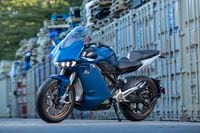
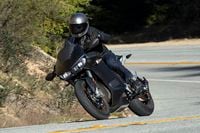
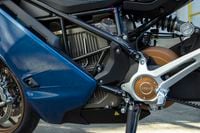
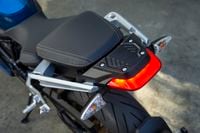
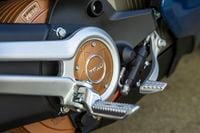
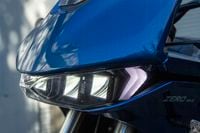
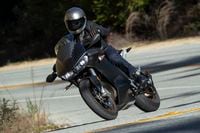
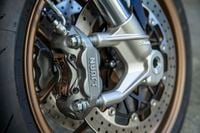
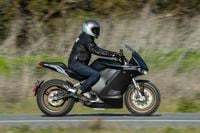
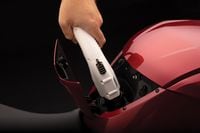
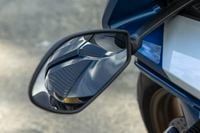

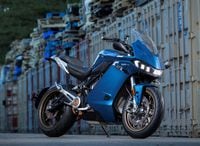
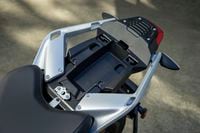

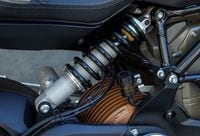
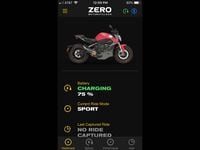
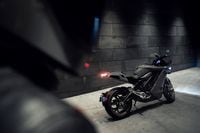
/cloudfront-us-east-1.images.arcpublishing.com/octane/MQXQRYMZVBCWJIRYP3HEN3SHVE.jpg)
/cloudfront-us-east-1.images.arcpublishing.com/octane/TSPODNNEWRDSVJGUCNQTDG4ADI.jpg)
/cloudfront-us-east-1.images.arcpublishing.com/octane/X5TB7BDV4BA2RPSY54ZGK27RP4.jpg)
/cloudfront-us-east-1.images.arcpublishing.com/octane/REUHOJXRDBGZ5IHBYZCCBCISPA.jpg)
/cloudfront-us-east-1.images.arcpublishing.com/octane/52LGJTCKBFEHDF7S7H4CVUIMGM.jpg)
/cloudfront-us-east-1.images.arcpublishing.com/octane/YMWAIPIPSJAOXOU3QMJMGH37OM.jpg)


/cloudfront-us-east-1.images.arcpublishing.com/octane/EJ6KZRGAYBCVXNL2PJXL37UVWQ.jpg)
/cloudfront-us-east-1.images.arcpublishing.com/octane/AAN4TI76M5H5JMUVEIGASWXBDU.jpg)
/cloudfront-us-east-1.images.arcpublishing.com/octane/P3RXD2UCPFF37CMB7CHPVKXORY.jpg)
/cloudfront-us-east-1.images.arcpublishing.com/octane/VZEG2EJI2RDFZNHLRZMU56MD3Q.jpg)
/cloudfront-us-east-1.images.arcpublishing.com/octane/GVJQO5FFOFBWNGODOBRB4FBAW4.jpg)
/cloudfront-us-east-1.images.arcpublishing.com/octane/BIVAK2SFIBDJJM25E7I5VU2FJE.jpg)
/cloudfront-us-east-1.images.arcpublishing.com/octane/CH5VX52UG5CFHOVH5A6UYEFWWA.jpg)
/cloudfront-us-east-1.images.arcpublishing.com/octane/ZVGJNGZRU5C33N7KN23BBFKSC4.jpg)

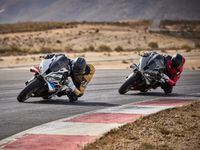
/cloudfront-us-east-1.images.arcpublishing.com/octane/CZ5OM3E43ZEXJHY7LCYXCHLIKI.jpg)
/cloudfront-us-east-1.images.arcpublishing.com/octane/DF5T4K5KPZFJXFCTGPYR77PKJM.jpg)
/cloudfront-us-east-1.images.arcpublishing.com/octane/RMCT2KVQBJHBZMRTSLOVPMOILU.jpg)
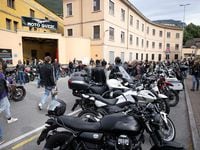
/cloudfront-us-east-1.images.arcpublishing.com/octane/K45KB2XHQVA65DX7VN4ZSMT2BI.jpg)
/cloudfront-us-east-1.images.arcpublishing.com/octane/FNHXQQ56BRD7TO4YIJ453PNG2M.jpg)